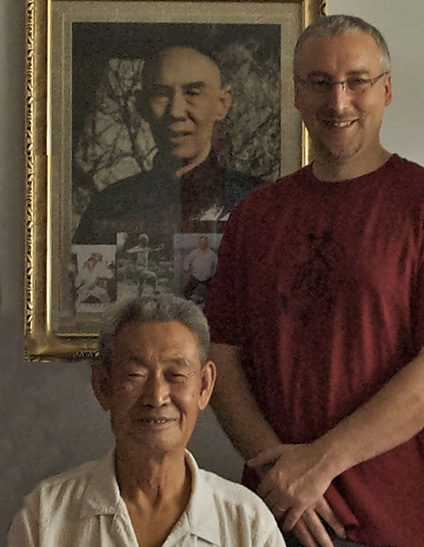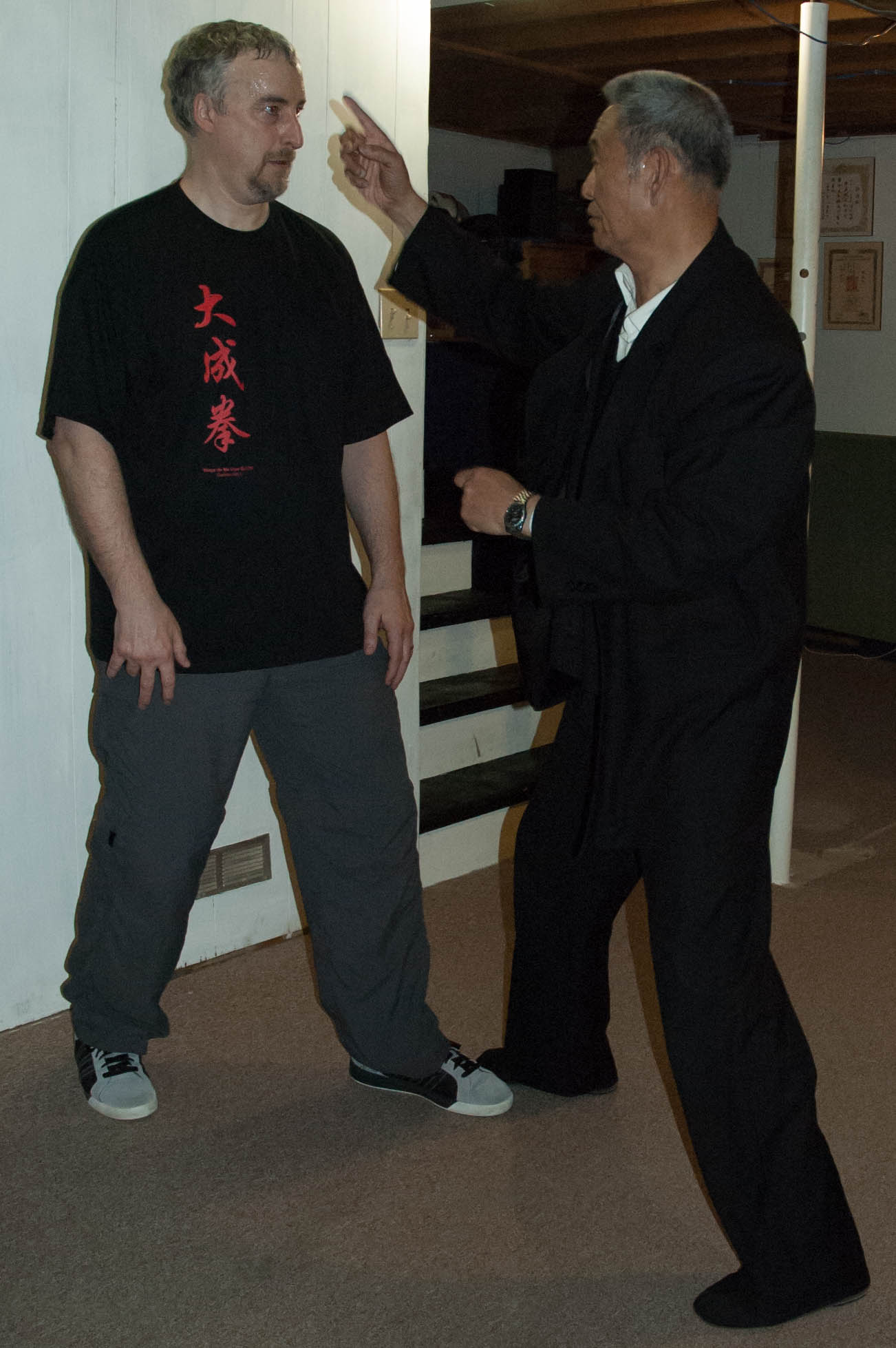Dachengquan (大成拳), or yiquan (意拳), is the martial art created by master Wang Xiangzhai (王薌齋) in China at the beginning of the 20th century.
The particularity of this method is that the beginning fundamental training is based on the practice of standing postures in apparent immobility known as zhanzhuang.
Our practice of dachenquan is greatly inspired by the teachings of master Guo Guizhi.
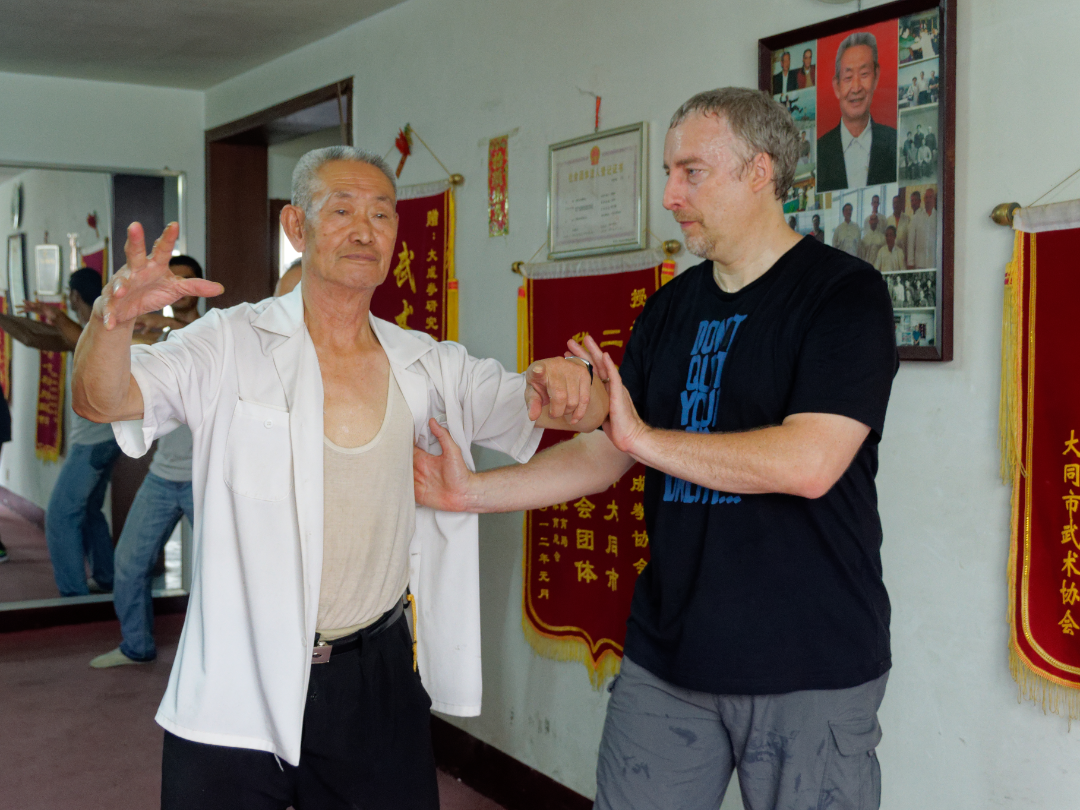
Master Guo Guizhi was himself a student of master Yu Yongnian and of master Yao Zongxun for many years. He also had the opportunity to study shortly directly with the founder of this school master Wang Xiangzhai in the early 1960s. He also had the opportunity to train intensively with other disciples such as Chang Zhilang and Wang Xuanjie.
Master Guo Guizhi formally accepted Philippe Munn as one of is disciple in his dachengquan school (郭氏大成拳).
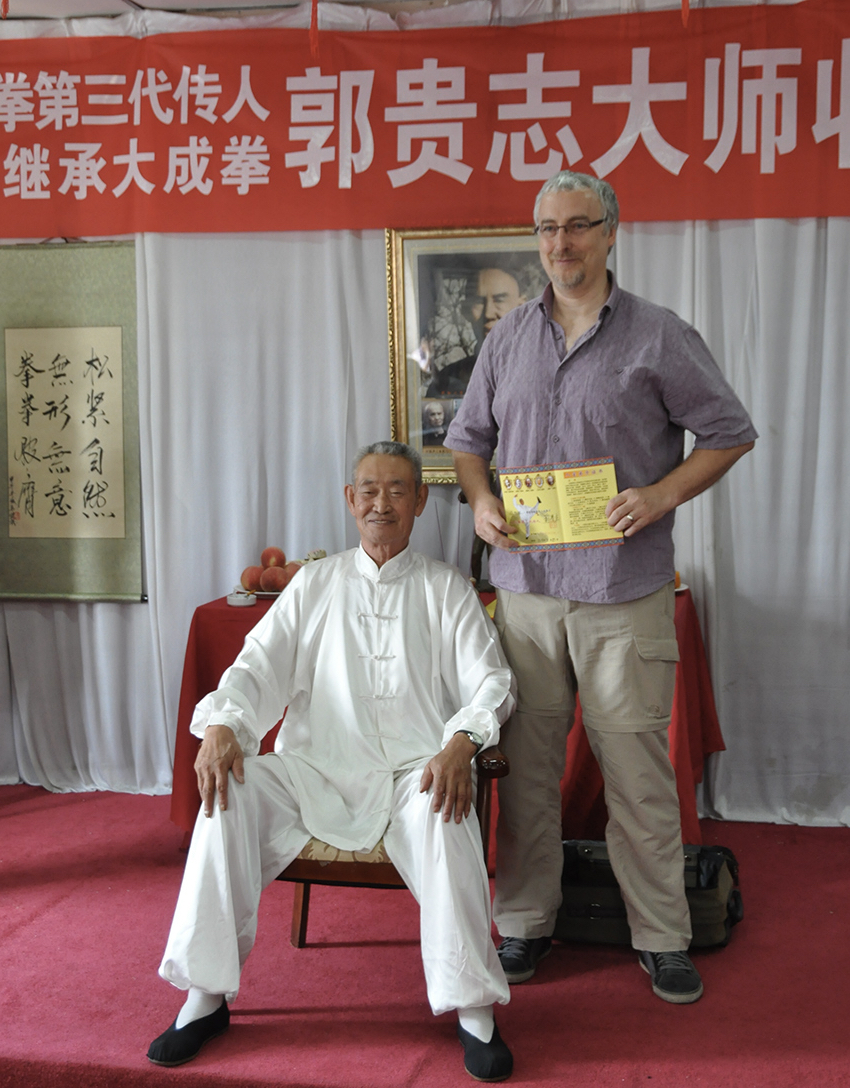
The training method of dachengquan (yiquan) is traditionally composed of seven elements: zhanzhuang (posture training), shili (testing strength), mocabu (stepping techniques), fali (expressing force), shisheng (using sounds), tuishou (push hands) and jiji fa (free fighting).
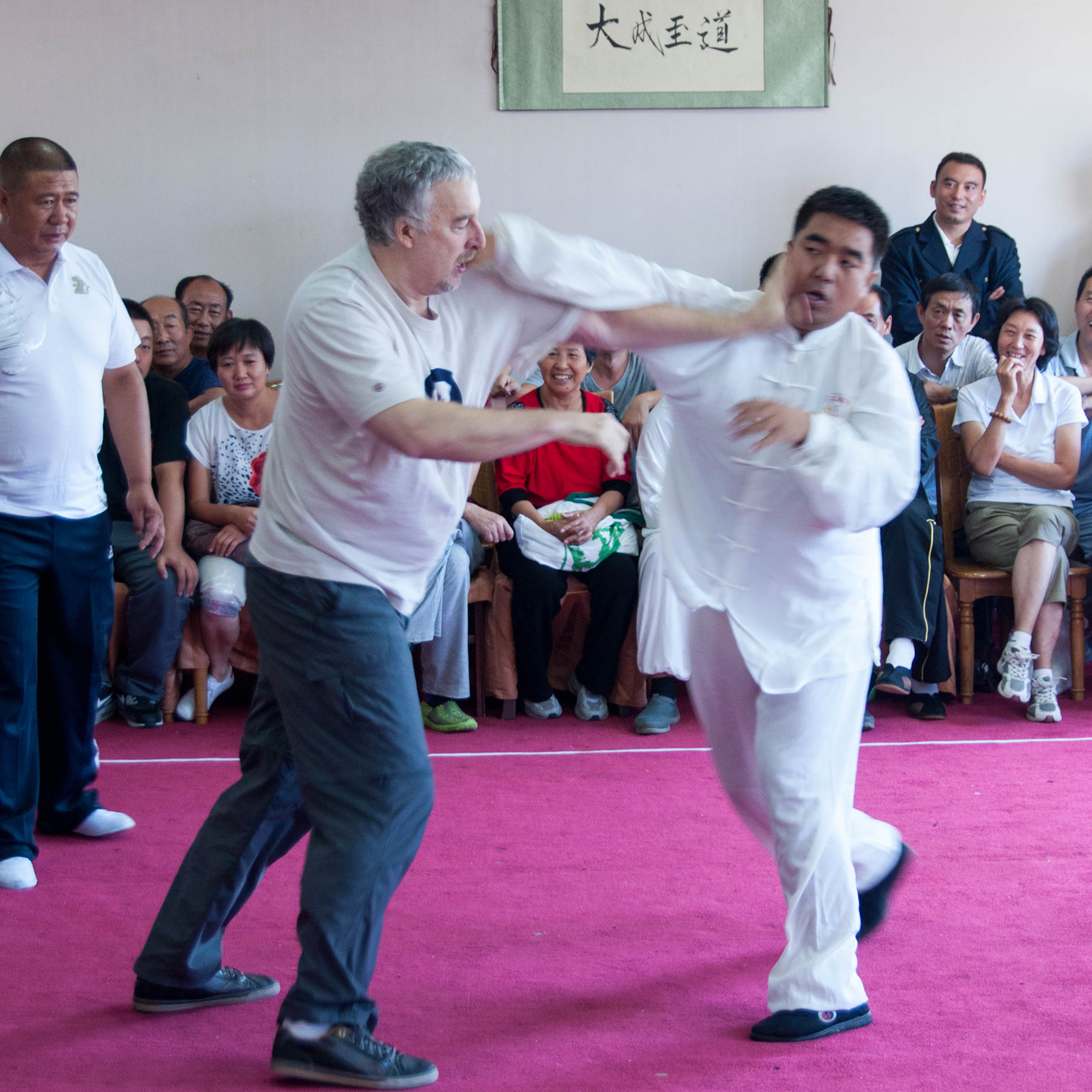
This type of training is primarily aimed at cultivating a good health while learning at the same time many of the basic essential elements necessary for martial arts training.
